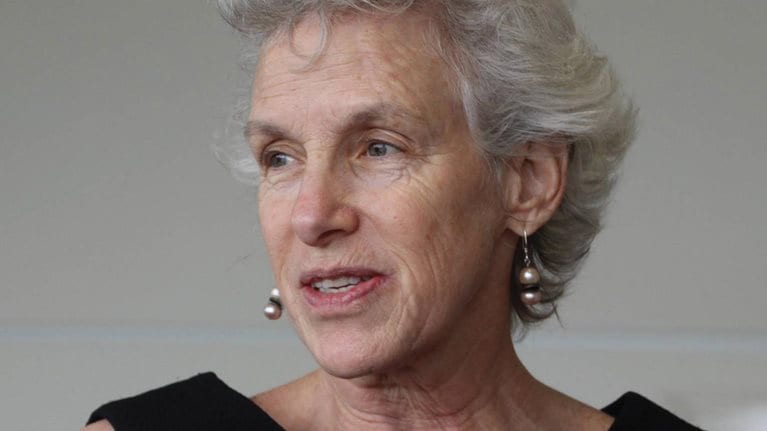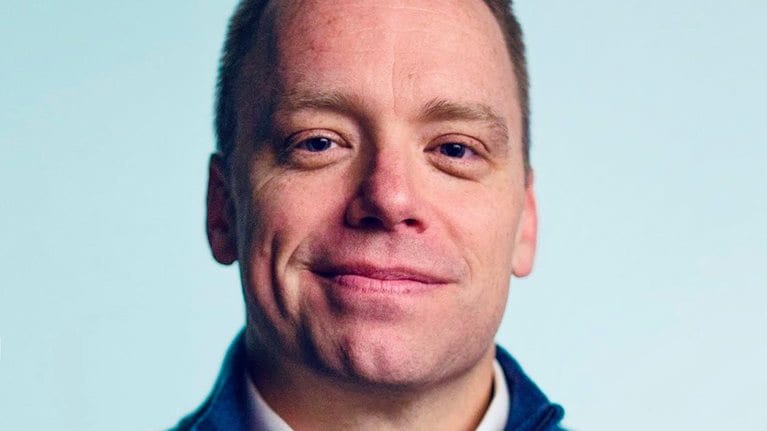In this edition of Author Talks, McKinsey Global Publishing’s Raju Narisetti chats with Jessica Nordell, a science journalist and speaker, about her book, The End of Bias: A Beginning (Macmillan), which was reissued in an updated paperback edition in August 2022. Nordell has witnessed a rise in overt extremism and discriminatory sentiments over the past few years, but equally important, she says, are the subtle instances of prejudice that can be more cognitively taxing than clear-cut discrimination. An edited version of the conversation follows.
Why is it so critical to explore unconscious bias?
I’m the author of the book The End of Bias: A Beginning, which is now out in paperback. The book looks at how people, organizations, and cultures become less biased and less discriminatory, and what approaches allow them to become more fair and just. Why is it so critical to address unexamined or unconscious bias when we know that explicit prejudice is also extremely important? Well, both are critical. Both are extremely consequential and cause real harm in people’s lives—and, I argue, to society more broadly.
I think what people might be surprised to know is that the subtle, ambiguous, everyday bias that’s pervasive in organizations and workplaces—not to mention in education, healthcare, and public safety—is actually more detrimental to our performance than explicit bias. If we are in a workplace and are dealing with bias and discrimination that are hard to pin down—where there could be some plausible deniability, where we’re not sure exactly what’s happening—it’s a much bigger drain.
It has a much more negative effect on our ability to perform and do our jobs than if someone is explicitly sexist or explicitly racist. The reason is that ambiguous discrimination is really mentally taxing. It requires a lot of cognitive resources because there’s so much questioning and second-guessing: “And am I overreacting? Is this person trustworthy? Can I really believe what they said, and did they really mean to say that?” It’s quite exhausting and taxing. It has a hugely negative impact on our performance. And that’s one of the reasons it’s so important to address.
Ambiguous discrimination is really mentally taxing. It requires a lot of cognitive resources because there’s so much questioning and second-guessing: ‘And am I overreacting? Is this person trustworthy? Can I really believe what they said, and did they really mean to say that?’ It’s quite exhausting and taxing. It has a hugely negative impact on our performance. And that’s one of the reasons it’s so important to address.
Another reason unconscious bias is so important to address is that it’s pervasive. Look at the patterns of treatment people experience in the workplace. Take, for example, an African American woman who is a midlevel engineer at an engineering firm. The patterns of bias she’s likely to face are things like being excluded from meetings, having her work credited to someone else, and being criticized for seeming too aggressive or too assertive. These things are not necessarily expressed as explicit sexism or explicit racism but have a cumulative, extremely negative, and consequential effect on her ability to do her job and on her career.
Why would those who actually benefit from their biases want to change?
How do we motivate people to change? Why should those of us who might express bias want to give it up or change? I want to answer this question with a story. Throughout most of the 20th century, in the field of ecology, scientists believed that nature was fundamentally competitive. They saw nature as consisting of opposing species vying for limited resources. It turns out that this is not the reality: nature is suffused with cooperation—we see mutually beneficial relationships in forest–fungi interactions and in flower–pollinator interactions, for example.
In fact, scientists now believe that almost every form of life is involved in some kind of cooperation or mutually beneficial relationship. Why did scientists get this wrong for so long? One reason is that the group of ecologists that were working on this problem were an extremely homogeneous group who, themselves, had only ever experienced a competitive environment. They were in fierce competition with one another; they were working within the Western, capitalist, scientific establishment; and they had—for their own conceptual frameworks—a competitive framework to draw from.
As people from different backgrounds came into the field, they brought with them perspectives that allowed for a broader view and, ultimately, a more correct view of how the world actually works. I bring this up because I think what we have to understand is that in order to progress as a society and species, and in order to tackle the enormous global problems that we’re facing, we need everyone to participate. We need all of the perspectives we can bring in. We need all of these backgrounds in order to be able to see what’s happening clearly and accurately and be able to move forward. I think that we all will benefit tremendously from tackling the biases that are currently excluding so many people from full participation.
Scientists now believe that almost every form of life is involved in some kind of cooperation or mutually beneficial relationship. Why did scientists get this wrong for so long? One reason is that the group of ecologists that were working on this problem were an extremely homogeneous group who, themselves, had only ever experienced a competitive environment.
Is there more overt prejudice today than in previous years?
I worked on this book for about six years, and when I started it, in early 2016, it was before the presidential election. What I’ve seen over the six years that I was working on the book is an increase in extremism, white nationalism, and other overt, explicit, and quite deeply held prejudices, as well as an increase in social norms making those prejudices somewhat more acceptable to hold and express in broader society, within some communities.
It’s alarming. If I could, I would like to write a companion book to this which looks at how we combat that kind of prejudice, because it’s a different approach than the approach to unconscious bias. When you’re talking about people who believe themselves to be egalitarian and who want to do the right thing and who want to treat people fairly, there’s a whole bevy of interventions and approaches that can be used to help people live in a way that’s more aligned with their values. If you’re working with people who hold explicit prejudices and believe in things like racial hierarchy or the value of the patriarchal organization of culture, there’s a very different approach that needs to be put in place to handle those interactions.
There is an approach that involves bridging the gap between a speaker who’s trying to persuade a person to change their mind and a person who is holding an explicitly prejudiced belief. It involves making a connection between the experience of alienation, isolation, or exclusion that person has had, and the experience of alienation, isolation, or exclusion of the targeted or stigmatized group that you’re trying to talk about. It’s an extremely important problem, and it needs a huge amount of effort and resources to tackle it.
If you’re working with people who hold explicit prejudices and believe in things like racial hierarchy or the value of the patriarchal organization of culture, there’s a very different approach that needs to be put in place to handle those interactions.
How can the past help with our current unexamined biases?
The study of history is essential to tackling the problem of bias and discrimination. I think there are two reasons. One is that we know from the research that the better people understand the discrimination of the past and the better they understand the history of prejudice, the better able they are to recognize it in the present—to perceive it and really grapple with it.
There’s an idea called the Marley hypothesis in psychology. It’s named after Bob Marley, who said, “If you know your history, then you would know where you’re coming from.” For instance, some studies have found that when people learn the role the US government played in creating housing segregation, the better able they are to perceive racism in contemporary housing and society. Part of the importance of history is simply the fact that when we understand the past, we can make a link between the past and the present and see what’s happening in the present in a clearer and more complete way.
The other reason I think history is so important is that it provides us with incredible examples of places, times, and cultures where our present patterns of prejudice did not exist. When we look at these examples, it can help us see the reality that prejudice is learned—it’s a human invention. It’s not natural, it’s not inevitable, it is culturally specific, and it is contingent. Recognizing that allows us to see that we have the capacity, as humans, to intervene.
Prejudice is learned—it’s a human invention. It’s not natural, it’s not inevitable, it is culturally specific, and it is contingent. Recognizing that allows us to see that we have the capacity, as humans, to intervene.
If we look, for example, at ancient Egypt, we see no sign of skin color prejudice. In fact, we see Nubians from what is contemporary South Sudan rising to the very highest levels of the Egyptian political administration. We see no sign of skin color prejudice—it just was not there. If we look at an example like the Haudenosaunee Confederacy, also known as the Iroquois Confederacy, in the Americas, we see women holding significant political power: choosing chiefs, deposing chiefs, meting out punishment (capital punishment in some cases), controlling the resources of the nation, and I could go on.
These examples can give us courage and a sense of creativity and allow us to imagine and build a world beyond the biases that we live with today.
What is the idea that laws and policies create the floor, but people determine the ceiling?
This idea that laws and policies create the floor but people determine the ceiling is critical. I started thinking about this through my conversations with Connie Rice, a civil rights attorney who spent about 15 years suing the LAPD for discrimination. What she came to understand over her career as a civil-rights attorney was that laws only determine how bad things can get. They put a floor under behavior, below which it can’t go—it’s a minimum standard.
If we look at the distance between that minimum standard and how we actually want to interact with one another—with trust, kindness, respect, love, and care—there’s a very big gap. Laws can only do so much. You can’t legislate kindness; I can’t order you to treat me with respect. What this means for organizations is that policies are essential, but it’s also important to create cultures and norms where people behave in ways that go above and beyond those policy minimums.
There are a lot of ways to do this. Creating social norms is a really good one; as humans, we are very influenced by what we see other people doing, particularly people who are thought of as popular and influential. There’s some interesting work that’s been done around shifting the behavior of a small group of people in order to create ripples to a larger organization or community.
Laws can only do so much. You can’t legislate kindness; I can’t order you to treat me with respect. What this means for organizations is that policies are essential, but it’s also important to create cultures and norms where people behave in ways that go above and beyond those policy minimums.
Additionally, it’s imperative for organizations and communities to understand that internal motivation is important, too. If I hold biases against you, that harms you, absolutely, but it also harms me, and I think this is something that we don’t talk about enough. If I’m biased toward you, this is preventing me from seeing the world clearly. It’s preventing me from really understanding what’s happening. It’s preventing trust between us. It’s preventing us from having a meaningful connection across whatever differences we have. In addition to having policies in place, I think organizations need to think about their norms and culture, and also what every individual has to gain by tackling their own bias in the context of that community.
Would you do anything differently in hindsight?
It’s so interesting writing a book, because you’re a completely different person at the end of the process than you were at the beginning. You couldn’t have become that person if you hadn’t written the book. I wrote this book in order to really try to understand how people change—how people, cultures, and organizations become less discriminatory and more just and fair.
To do that, I used the lens of unconscious bias to look at the ways we interact with one another that don’t align with our values, as well as what can be done to make those behaviors more aligned with our values. I think if I were to do it again, I might use a different term than unconscious bias. The field of psychology tends to dichotomize bias and prejudice as either implicit or explicit, either conscious or unconscious. Over six years of research, reporting, and talking to many experts, what I’ve come to understand is that the distinction is not so clear—our minds are an unknowable combination of conscious and unconscious, implicit and explicit.
I think I would use the term “unexamined bias” instead to capture the fact that some of these expressions of bias and discrimination are somewhere between conscious and unconscious, but the important thing is that they haven’t been examined; they haven’t been really looked at carefully. That’s the important distinction.
Watch the full interview



